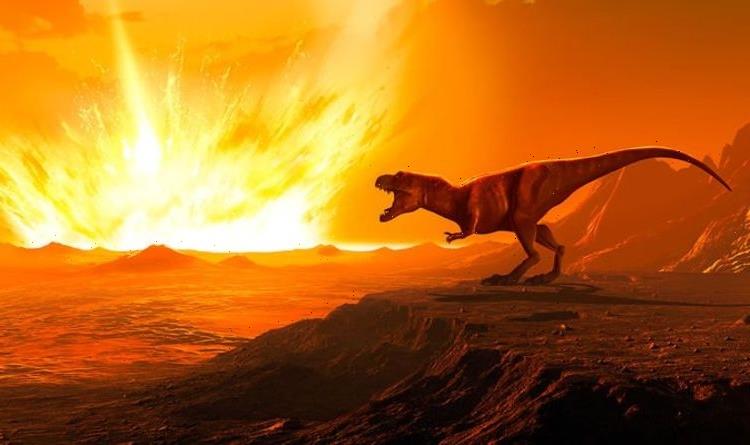Tyrannosaurus rex: Expert examines brain of dinosaur
We use your sign-up to provide content in ways you’ve consented to and to improve our understanding of you. This may include adverts from us and 3rd parties based on our understanding. You can unsubscribe at any time. More info
Approximately 66 million years ago, the six-mile-wide asteroid crashed into the Yucatan peninsula in Mexico, starting a nuclear winter. The event is said to have caused the extinction of the dinosaurs. But a team of palaeontologists from Université de Montpellier in France, the University of Bristol in the UK, and the University of Alberta in Canada are set to rewrite history.
They have found evidence that the reptile’s biodiversity was already in steep decline some 10 million years before the huge space rock slammed into Earth.
The team of researchers focused on six dinosaur families, three carnivores and three herbivores, that survived 40 million years of evolution up until the asteroid hit Earth.
They examined fossils from over 1,600 individual dinosaurs of around 250 different species in total.
Their results, published in Nature Communications, showed that the biodiversity of the six families was already in steep decline, some 10 million years before the asteroid hit.


It is a significant discovery because it suggests the decline in biodiversity of dinosaurs was worldwide.
Researchers said that the herbivorous dinosaurs declined in number slightly before the carnivores, making it highly probable that the decline of herbivorous species directly caused the decline in carnivorous species.
One theory for why dinosaurs were declining in numbers prior to the extinction event is climate change.
During the Cretaceous period, between 145.5 and 65.5 million years ago, the Earth underwent a global cooling period of 7-8C.
Dinosaurs were mesothermic animals and needed a warm climate to maintain their body temperature and the functionality of their metabolism.

It is theorised this cooling would have severely impacts ed their ability.
Their finding comes after scientists found the “dark” origins of the dinosaur-ending space rock.
Past studies have suggested the killer asteroid may have actually been a comet from the farthest edges of the solar system.
Others have argued the asteroid was the remnant of a larger object scientists have named Baptistina.
Scientists from the Southwest Research Institute (SwRI)think they have finally traced the asteroid’s origin to the asteroid belt circling the Sun between Mars and Jupiter.


According to their study, the Cretaceous-Paleogene Impact may have been caused by a primitive and “dark” rock from our system’s main asteroid belt.
Using a mix of computer simulations and direct observations, the SwRI scientists found the asteroid belt sends large rocks hurtling our way 10 times more frequently than previously thought.
More importantly, the composition of these asteroids matches the Chicxulub asteroid that struck off the coast of Mexico.
The asteroid belt is home to thousands of ancient rocks ranging in size from 33ft (10m) to 329 miles (530km) across.
Source: Read Full Article
